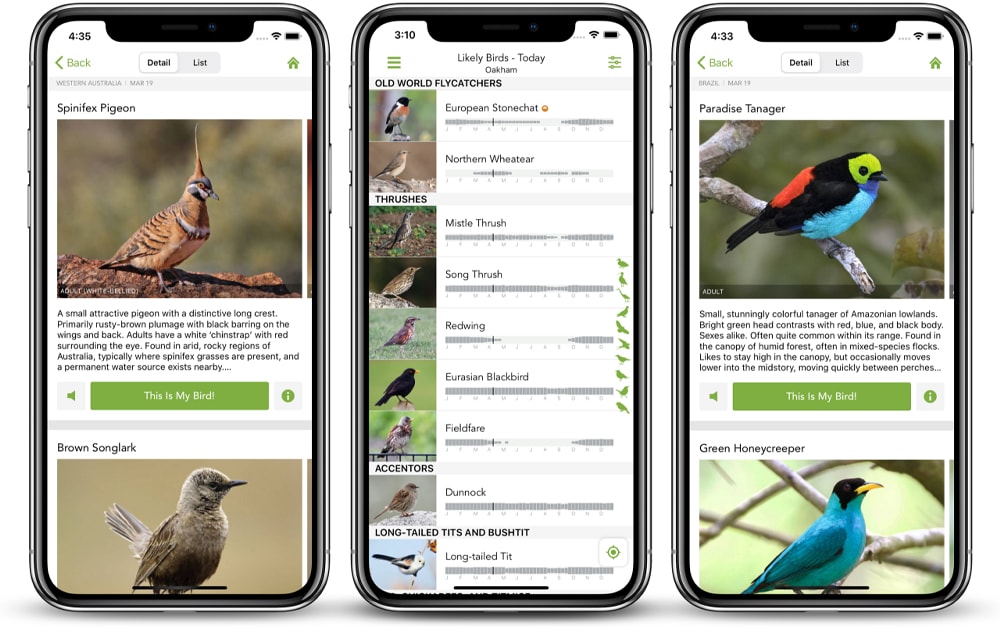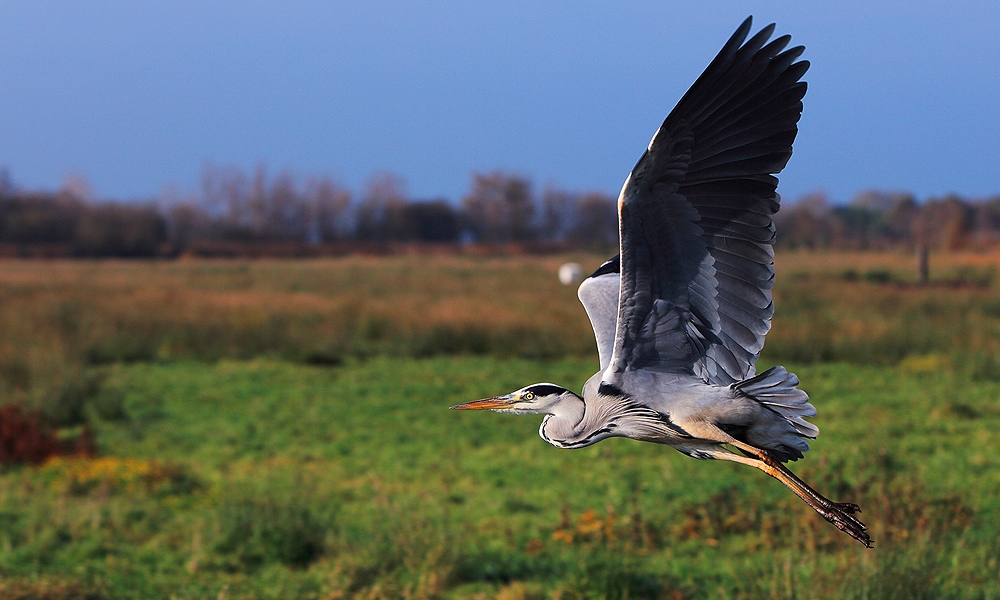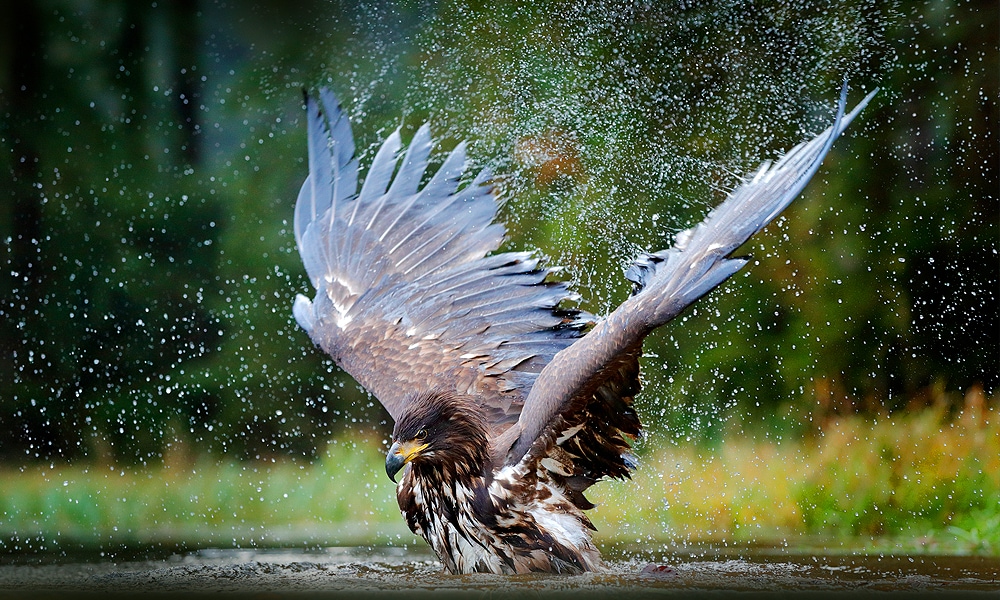Get any seasoned birdwatcher talking, and you’ll soon hear all about the rarest birds on their life list. But for newcomers to the hobby who don’t know the vocabulary, these conversations might leave you scratching your head. What is a life list? Do I have to keep a life list to birdwatch? What counts as a “life lister?”
Every birdwatching journey starts somewhere. We’ll help you understand the life list, so that you can keep up with the pros and keep one of your very own if you so choose! Click any of the links below to skip to that section and get your questions answered!
What is A Bird Life List?
A birding life list is like a checklist. It’s a list counting all of the birds that a birder has ever observed and properly identified. Many dedicated birders allocate time and resources just to be able to keep their lists growing.

For some, it is simply a list of birds and some relevant information. For others, it is a bird watching diary that includes their thoughts and emotions at the time of the sighting.
There are no real “rules” unless you’re going after a record of some kind. Some birders keep lists that include birds that they’ve heard, others include photographs, and many more will include sightings that they haven’t conclusively identified. A life list is a personal choice; a record of your birdwatching adventures. It’s up to you to decide how to use it.
Whichever way you want to go about it, the important thing is that your list gives you a birdwatching log that will help you look back on all your wonderful birding memories.
Why do Birders Keep a Bird Life List?
The answer is as simple as “because it’s fun”. Appreciating as many birds as you can is the aim of birding, so the act of adding a new species to your birds list is concrete proof that you were successful. It’s also a great way to keep track of birds that you want to see but haven’t yet; those coveted “life listers.” For more serious birders, there are other reasons to keep a birders diary.
Motivation and Prestige
National birding associations publish rankings on an annual basis, which serves as a motivator for many birders. And since the length of a bird watching list is often directly proportional to the experience and dedication of a birder, it’s no wonder ranked birders are held in such high esteem. For these kinds of life lists, rules may apply as to what kinds of sightings are included.

How Many Birds Will You List?
The number of entries in a birder’s diary depends largely on how much time and travel they do for birding. If you’re a casual bird watcher who sticks to local spots, you can reach over 100 species if you live along a bird migration route. In this context, a life list can be a great way of keeping track of how well you’ve gotten to know your local wildlife. You might even record quantities of sightings so you can develop an understanding of population trends.
But if you want your life list reach 300 or more, you may have to start traveling. Birders often go to wildlife reserves with different landscapes to bulk out their lists. At 600, your life list reflects not just your birdwatching journey but your travels, earning you a spot in the prestigious “600 Club”. For reference, that’s 75% of species ever spotted in North America.
But the top birders, known as “big listers,” trump that by thousands:
- 10,000 – Peter Kaestner used to be featured in the number 5 spot on this list, but he recently made headlines with his 10,000th sighting, an Orange-tufted Spiderhunter that he photographed in the Phillipines. Kaestner’s world record life list will be hard to beat seeing as it represents over 90% of the estimated 11,000 bird species on earth.
- ~10,000 – A little-known birder who emerged out of obscurity as a “big lister,” Jason Mann claimed to have achieved his 10,000th sighting around the same time as Kaestner. Some of his sightings have been called into question and he himself has acknowledged Kaestner as the record-holder, but even if 10,000 isn’t accurate, his surprise arrival on the big lister scene is worth a mention.
- 9,684 – Dr. Claes-Göran Cederlund is the former world record holder. Born in 1948, he devoted much of his life to birding even traveling through 120 countries to grow his list.
- 9,646 – British citizen Philip Rostron started birding at 12, and nearly five decades later, has reached the 2nd top spot. He takes 3-4 international birding trips a year.
- 9,600 – Even years after his death in 2018, Jon Hornbuckle remains among the top international bird listers. He might have observed more by sound, but he only recorded the birds he’s seen.
- 9,478 – Jürgen Lehnert of Germany rounds off the list.
Birds That Count For a Bird Life List
You’re free to add any bird you’ve observed to your birding notebook if it’s just meant to be a casual record of your birding experiences. Let me repeat again, there are no “rules” for a life list. However, if you want to be in the same league as competitive birders, there are additional parameters about bird lists you’ll have to follow in order for your sightings to be trusted and acknowledged by the birding community:

Positively Identified
According to the Longdom Entomology, Ornithology, and Herpetology Research Journal, positive identification means determining the bird’s identity based on physical characteristics, habitat, and feeding methods. So make sure that the species you add to your bird watching journal match the appearance, calls, habitat, and behavior of the bird you’re observing.
Ethically Observed
Birds observed under circumstances violating birding ethics should not be ticked off a birding checklist. Remember that above all, birding is about respecting birds and their habitats. You may be desperate to see a particular bird, but know that you are not allowed to add it if the sighting is the result of flushing, violating local laws, trespassing private property, or engaging in any damaging, harmful, or illegal behaviors.
Only Alive Birds
According to the eBird rules and best practices, a birder’s list of bird species should only include species seen alive. Stuffed birds in museums, birds killed by neighborhood cats, or eggs without their parents should not be included in your official list, although you are absolutely free to consider them a part of your personal birding diary.
Observed in The Wild
Your birders’ journal should not include pet birds, birds displayed in zoos, or domesticated species. Bird watching is about appreciating birds in their natural habitat and witnessing their natural behavior. Part of the joy of birding is the chase, so enjoy it! Once again, these birds may still feature on your personal list, but logging them on eBird is dishonest.
Birds Need to Be Free
Birds that are caged, tied, or otherwise restrained are not to be counted in official bird lists. Likewise, watching as a rehabilitated bird is released back into the wild is not considered birdwatching in the competitive sense. However, if you see that same bird later on already behaving naturally in its natural habitat, then it can be counted.
Birds In Their Native Habitat
There is a reason that the legendary bird listers recognized by official associations travel so much. For their list to be considered, the birds listed in it should have been observed in their natural habitat. Migration or any form of bird travel without human assistance is also allowed.
Birds You Shouldn’t Add to Your Life List
Aside from meeting certain conditions about the circumstances of bird observation, there are also restrictions about the kinds of birds that can be counted.

Morphs
Within a species, birds may have different colored plumage. Even if you have seen multiple color morphs, all of them only count as one species for the purposes of a competitive life list.
Genders
Some avian species exhibit dimorphism, in which the physical appearances of the female and males are distinct. You can only list them as one species, but your birdwatching diary or notes are a great place to expand on details like this. When you look back at the sighting, you’ll be glad to have a detailed record of your encounter!
Hybrids
Hybrids birds have parentage from two different species. For example, a swoose is a cross between a goose and a swan. While fascinating, they are not generally accepted in birding lists.
Subspecies
Subspecies are not counted separately. For example, if you see a Eurasian green-winged Teal and an American green-winged Teal, you can only list them as one species. This is, again, only true for an “official” list. Feel free to count them in your personal diary.
How to Start a Bird List?
If you want to start making a list of all birds you’ve observed, you can choose from three main record types: a handwritten record, a ready-made bird watching checklist, or a bird life list app. There are pros and cons to each, so choose the one that is most convenient for you.

eBird
The Cornell Lab of Ornithology’s eBird is the gold standard in bird listing software. It is ideal for birding outdoors with offline mode, GPS tracking, and bird counts. It may be hard to navigate at first, but once you get the hang of it, it’s indispensable. This is generally the best way to keep a life list that others can see and compare.
Merlin Bird ID
Merlin Bird ID is another option if you want to keep your bird life list online but with less effort. It’s very easy to use for beginners because of its handy identification system: either answer 5 simple questions or upload a photo of the bird, and the app will narrow the list for you. Merlin is a fantastic tool for beginner birders who have trouble with the identification aspect of birding.
Sibley Birder’s Life List and Field Diary
If you prefer taking handwritten notes, Sibley Birder’s Field Diary is a great choice for you. It has ready-made entries for 923 species found in North America and Canada arranged by group. All you have to do is fill in the date, location, and notes you have on a sighting.
Birder’s Life List & Journal
If you find a bird checklist app is difficult to use, you might prefer to go for a manual bird checklist book like Birder’s Life List and Journal. This has ready-made entries for North American and Hawaiian birds, as well as an easy indexing system to help you input information quickly.
DIY Checklists
A printable birding checklist is great if you want birding identification to be as easy as ticking off a box. Popular options are the ABA Checklist and the Avibase Bird Checklists of the World which have offer lists per state or region. Pick the one appropriate to you and tick away! You can even draw one up yourself if none of the options above catch your eye.
Other Bird Lists
Keeping a record of all the birds observed throughout one’s lifetime takes effort and organization. For more casual birders, it helps to start with smaller lists.
Casual or beginner birders can start their journey by simply jotting down the birds they’ve seen locally. Add to the list as you go, and if the time comes where you want to use a more structured list, you can just add the sightings to it!

Big Day List
This entails making a list of every bird you observed within one 24-hour period. You can use bird list apps, bird software, birding journals, or checklists. This is the perfect way to remember the birds you’ve seen on a “big day” out birdwatching.
Big Night List
For night owls for whom waking up at dawn seems challenging, why not try sundown to sunrise birding session? Then list down your entries on your big night list.
Big Year List
Bring it up a notch by recording all the birds you’ve seen between January 1 and December 31 of the year. Great practice for a life list!
Backyard List
Sometimes, a list based on area is easier than a list based on time. A simple idea is to keep a running list of all the birds you see from your backyard. This can be a great way to track activity at your birdfeeder as well!
State List
A lot of online bird lists are arranged by state. You can use a list for your home state, or make separate state lists for any state you visit.
Zoo List
Keeping a record of all the exotic birds you see in the zoo allows you to get a feel of international birding without the cost of an airline ticket. Sure, captive birds don’t count for competitive lists, but nothing’s stopping you from practicing your bird identification skills on the exotic aviary at your nearest zoo.
Trip List
Going out of town? Look for a bird list in the area you’re visiting and check off whatever you’re able to observe during your stay. Think of it like a birding scavenger hunt to add some spice to your trip and practice your birding skills.
Final Thoughts
I hope this article has helped to answer your questions and get you excited about life lists and birdwatching in general. Before I finish, I want to remind the beginners who may read this that, as long as you are respectful of nature and conduct yourself ethically, there is no “wrong” way to birdwatch. For some, a life list means fighting tooth and nail for the world record, taking thousands of photographs, and traveling the world.
But you’re no less a birdwatcher if you love watching the chickadees that visit your feeder. Birdwatching is about love and loving birds is all it takes. So go out there, be it your backyard or the jungle, and spot some birds! I’m rooting for you!

